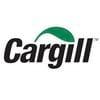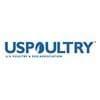Check out what is new in Poultry Industry
Find the best technical articles, forums, and videos on Poultry Industry at Engormix. Enter now and interact with the world's largest agricultural social network.
Featured comment:

With the evolution of more sophisticated poultry houses, the understanding of the fundamentals of environmental control is mandatory. I congratulate Ricardo for all his contributions, bringing updated information in this area of poultry production. ...
Comments : 2
Recommendations: 2
Featured comment:
@Dr Kotaiah Talapaneni, A just hatched bird does not need to eat because it already has its own yolk sack. But the broiler has inherited a survival gene that makes its brain spark for FOOD.
They will eat mash, pelleted, whole, etc., to fulfill the 8 enunciated points. Until then, they will rest, but in an instant, they will have grown and need more feed. ...
Comments : 26
Recommendations: 10

In this Engormix interview, Nath Morris, President of U.S. Poultry & Egg Association, shares his expectations for IPPE 2026. ...
Comments : 0
Recommendations: 1

Julian Madeley, Director General at the World Egg Organisation, shares why eggs remain one of the most powerful nutritional foods worldwide and highlights the projected 21% global growth in consumption over the next decade. Speaking from Poultry India in Hyderabad, he explains why India—already the world’s second-largest and fastest-growing egg market—is set to drive a quarter of this global expansion. ...
Comments : 0
Recommendations: 0
Once again, Hangzhou De Mark is showcasing its comprehensive range of feed ingredients and additives at the International Production & Processing Expo (IPPE) – the premier event for the feed production and processing industry.
From veterinary APIs to feed additives for animal healthcare and nutrition, discover what...
Comments : 0
Recommendations: 0

Ricardo R. Guerra, Ventilation Expert at Cargill, points out the main points of his conference about Environmental Control (EC ) in Poultry India 2025 ...
Comments : 2
Recommendations: 2

Dr. PrakashBabu Manilla, Chief Geneticist at Venkateswara Hatcheries, explains how the company supplies over 75% of India’s commercial layer chicks—meaning seven out of every ten eggs come from their genetics. He highlights strong growth in the egg sector, driven by rising demand for affordable protein across the country. With solid domestic expansion and increasing export potential, the future of India’s layer industry looks highly promising. ...
Comments : 0
Recommendations: 0

Dr. Vishwas Sagajkar, DGM Marketing at Venkys India, outlines how shifting weather patterns are driving higher fungal contamination and a surge of multiple mycotoxins in Indian feed ingredients. He highlights the dominance of fumonisin in corn and DDGS, alongside other recurring toxins such as aflatoxin, ochratoxin, citrinin, and T2. ...
Comments : 0
Recommendations: 1


Effects of DON and antidote on pro-inflammatory mRNA expression of broiler
Suggested link

Fran Alonso, Global Commercial Director at Liptosa, outlines the company’s 25+ years developing phytogenics, organic acids, mycotoxin binders, and specialty additives. He highlights how modern genetics and market complexity demand more efficient nutrition and innovative solutions. *Certain information associated with products, their composition and claims may be different depending on the geographical region and may not be applicable in all countries. Liptosa reserves the right...
Comments : 0
Recommendations: 0

Deepak Khosla from the Venkys Group highlights steady growth in India’s poultry sector alongside rising challenges: mycotoxins, biosecurity gaps, and weakened immune responses. He stresses strict vaccination programs, strong biosecurity after global avian influenza events, and better water and shed management. With climate-driven grain contamination increasing, producers must adopt precise solutions to protect flock performance. ...
Comments : 0
Recommendations: 1

Josep García Sirera, Toxin Solutions Manager at Agrimprove/ Special Nutrients explains how Bio-Bantox Plus combines two bentonites—one natural and one processed—to capture the full range of mycotoxins. The dual polarity approach binds both hydrophilic toxins like aflatoxin and lipophilic toxins such as DON or zearalenone. Its lipophilic component also neutralizes pesticides, chemical residues, and endotoxins, making it a complete toxin-binding...
Comments : 0
Recommendations: 1

Andrew Vignati from VICAM speaks about the benefits of using this technology for mycotoxin detection in the feed ...
Comments : 0
Recommendations: 0

Mr. O. P. Singh, Managing Director at ABTL, shares key insights from Poultry Knowledge Day and calls on current and future poultry leaders to work with unity, one voice, and a shared mission to elevate India’s industry. ...
Comments : 0
Recommendations: 0

Mukesh Kumar Meshram, Principal Secretary of Animal Husbandry in Uttar Pradesh, explains the region’s poultry supply gap and the need for new farms and hatcheries. He highlights low egg availability, lack of technical training, and the urgency to improve cattle genetics. The state seeks private sector involvement to modernize infrastructure, boost productivity, and strengthen disease control. ...
Comments : 0
Recommendations: 2
1. Introduction The gastrointestinal tract is a dynamic and complex environment that requires a correlation between the gut microbiota and the host for good functionality [1–3]. The composition of the gut microbiota changes throughout the life of the animal or due to various factors like the environment, behavior, and diets [4]. Studies indicate a strong correlation between intestinal diseases and the constitution of the microbiota [1,2]. A healthy gut is an essential...
Comments : 0
Recommendations: 0
Introduction Dorsal cranial myopathy (DCM) is characterized by muscular changes, including degenerative and multiphasic lesions that specifically affect the anterior Latissimus dorsi (ALD) muscle in chickens, a superficial, bilateral muscle located in the dorsal region of the wings, which functions as an abductor of the humerus and wings [1–4]. Macroscopically, the ALD muscle region affected by DCM shows yellow, odorless, gelatinous edema under the skin [5,6]. The muscle...
Comments : 0
Recommendations: 0


Evonik upgrades logistics infrastructure for MetAMINO® in Antwerp
Suggested link
Introduction Current poultry production targets at reducing productions costs and nitrogen excretion into the environment while maintaining an effective animal performance. The key to limit nitrogen excretion is a reduction of the protein content of the diet with concurrent supplementation of deficient and (performance-)limiting amino acids (AA). The aim is to provide balanced quantities of individual AA at the sites of protein synthesis, which have to be further balanced with...
Comments : 0
Recommendations: 0
Just taking this opportunity with this medium to see if there is good community feedback on how we should be thinking about environmental management and microbiology together?
We usually keep them very separate - with certain key identifying data now being leveraged between them. However, it seems like the microbiology data is flowing more to management needs - but I don't see many indications of environmental management parameters flowing back to microbiology...
Comments : 0
Recommendations: 1

Jonathan Cade, Chairman of the U.S. Poultry & Egg Association, explains how IPPE generates the resources that fund essential research, education programs, and industry support across broilers, layers, and turkeys. He highlights the organization’s role in advancing animal health, productivity, and training the next generation of professionals who will shape the future of the poultry sector. ...
Comments : 0
Recommendations: 1

Mr. Suresh Chitturi, Vice Chairman & Managing Director of Srinivasa Farms, shares his perspective on the critical role elite genetics play in India’s poultry production. He also highlights the key opportunities ahead and the challenges the industry must address to sustain its growth. ...
Comments : 0
Recommendations: 2






















.jpg&w=3840&q=75)





.jpg&w=3840&q=75)














